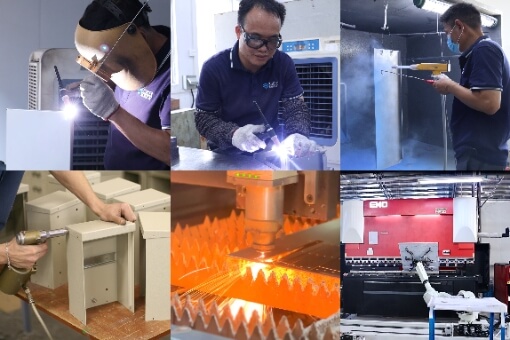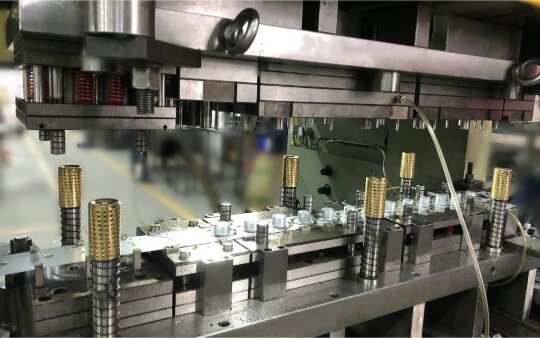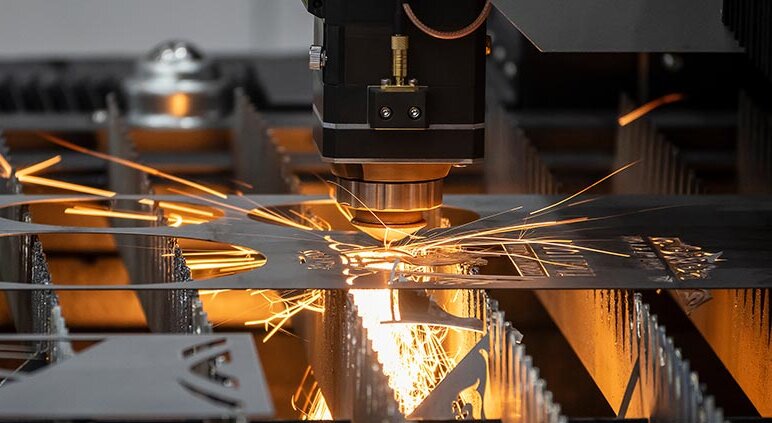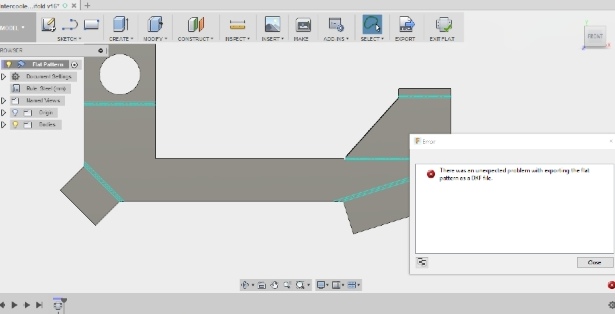Laser cutting is a versatile, precise process, but its cost can vary widely. Are you wondering how to estimate the cost of laser cutting for your project? The good news is that several factors influence the price, but with the right understanding, you can manage your budget effectively.
Materials, thickness, machine type, and job complexity influence laser cutting costs. Generally, the more intricate the design and the thicker the material, the higher the price. By understanding these variables, you can plan your project more accurately and reduce surprises in pricing.
Laser cutting can offer significant advantages in precision and speed. However, knowing the factors that affect its cost can help you make more informed decisions. Let’s break them down so you can confidently prepare for your next project.

Basic Principles of Laser Cutters
Laser cutting is based on a few important principles that make it a precise and flexible process. Understanding these principles can help you choose the right cutting method for your needs.
Unified Source of Light
Laser cutters use a high-powered laser beam as their light source. The laser focuses light into a single beam with a high energy density. This concentration of energy allows the laser to cut through different materials efficiently and precisely.
Flexible Material Absorption
Laser cutters can work with a wide range of materials because each material absorbs laser energy differently. Properties like reflectivity and density affect how well a material absorbs the laser beam. For example, metals usually absorb laser energy better than plastics, which can result in different cutting speeds and quality.
Focused Heat Concentration
The laser focuses intense heat on a small area of the material. Depending on the type of material, this heat melts, vaporizes, or burns it. The concentrated heat ensures a clean, precise cut and reduces the need for additional finishing or machining.
Optical Precision
Laser cutters use high-precision optics to focus the laser beam exactly where needed. The optical system directs and focuses the laser on the material, ensuring accurate cuts. This precision allows for intricate designs and fine details, which makes laser cutting stand out compared to other methods like mechanical cutting.
What Affects Laser Cutting Costs?
Laser cutting costs depend on several factors. Understanding these factors will help you estimate the price for your project.
Material Type and Thickness
The material you choose is a key factor in the cost. Common materials for laser cutting include aluminum, steel, and stainless steel. Each material has a different cost, which affects the job’s overall price.
Thicker materials are usually more expensive to cut. This is because the laser requires more energy to cut through thicker sections, which increases cutting time. Materials that are harder to cut, like certain alloys or more reflective materials, may also need more power, raising the cost.
Complexity of the Design
The more complex the design, the higher the cost. Intricate designs require more time and precision to cut, increasing labor and machine time. The more detailed the cut, the slower the laser works, raising operational costs.
If your design is detailed and uses vector files, the machine will make more passes, which takes additional time and resources. Designing and programming, especially for custom shapes and patterns, also add to the cost.
Machine Type and Power
Laser cutters vary in type and power. The most common types are fiber lasers and CO2 lasers. Fiber lasers are often faster and more efficient but have higher upfront costs. Over time, they can be more cost-effective because they cut faster and use less energy.
Higher-powered lasers can cut thicker materials faster but are more expensive to operate. You may choose a lower-powered machine for smaller projects or designs requiring more precision. However, this may slow down the cutting speed.
Quantity of the Cut Pieces
If you’re ordering in bulk, the piece cost usually decreases. This happens because the setup time for the laser cutter is the same whether you’re cutting one part or one hundred. When cutting larger quantities, the setup cost is spread over more pieces, lowering the price per unit.
Cutting Speed and Time
The time it takes to cut each piece directly affects the cost. The faster the laser can cut, the less you pay. Cutting speeds depend on the material thickness, design complexity, and type of laser.
Longer cutting times lead to higher costs. Simple designs with thinner materials are quicker to cut, resulting in a lower price. However, more complex designs or thicker materials require more cutting time, raising the overall cost.
Setup Time and Labor Costs
Setting up a laser cutting job takes time. The more complex the job or design, the longer it takes to program and set up the machine. Labor costs also affect the final price.
Machine Wear and Maintenance
Laser cutters need regular maintenance to stay efficient. Wear and tear on the machine can impact costs, especially when cutting high volumes. Maintenance tasks, like cleaning and replacing worn parts, help keep the machine running smoothly.
Energy Consumption
Laser cutting machines use electricity to operate. The energy used can vary depending on the laser’s power and the material being cut. Higher-power lasers and thicker materials need more energy, which raises the cost.
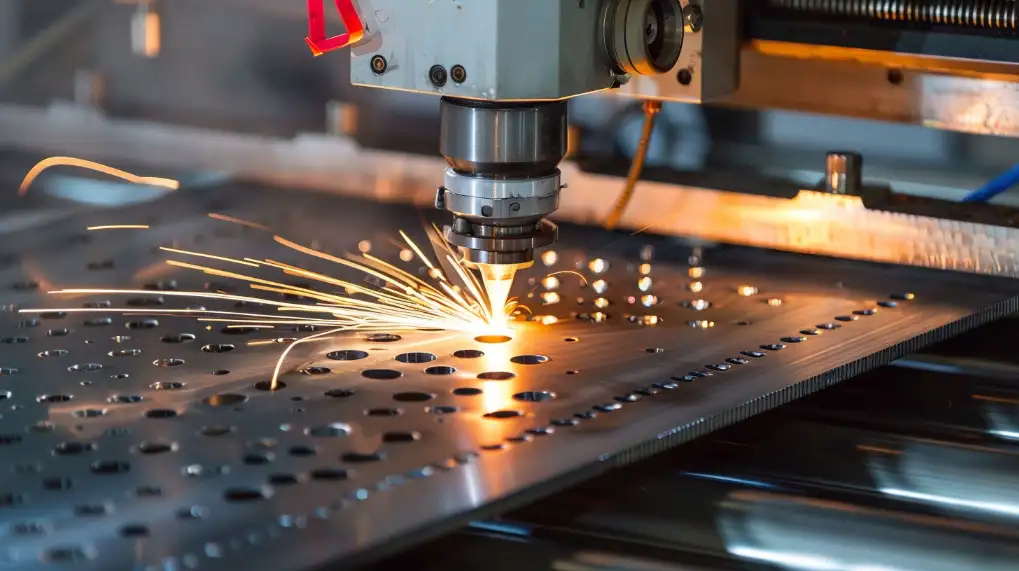
Material Costs in Laser Cutting
Material costs are important in determining the overall cost of laser cutting services. Understanding how material choice, thickness, and other factors impact pricing can help you make more cost-effective decisions.
Common Materials Used in Laser Cutting
Laser cutting works with a variety of materials. The most common ones include:
- Metals: Steel, stainless steel, aluminum, and titanium are widely used. These metals offer strength, durability, and ease of processing.
- Plastics: Acrylic, polycarbonate, and PVC are often used for parts that don’t need as much structural strength but require detailed cutting.
- Wood: Thin wooden sheets or plywood are commonly cut for design and crafting.
- Paper and Cardboard: Laser cutting creates detailed designs for packaging, promotional materials, and art.
- Textiles: Fabric, leather, and synthetic materials can be cut for fashion, upholstery, and other uses.
How Material Costs Impact the Final Price?
Material costs directly affect the price of a laser cutting project. High-quality or specialty materials, like stainless steel or titanium, tend to be more expensive than common metals or plastics.
The cost per material unit affects the overall pricing, with pricier materials leading to higher project costs. Additionally, suppliers may charge more for materials in high demand or with special properties, such as fire resistance or high durability.
Another factor is material wastage. Some materials must be ordered in specific amounts, and leftover pieces may be discarded. Service providers often include this wastage in the overall cost, especially for custom orders.
The Role of Material Thickness in Pricing
Material thickness is a major factor in pricing laser cutting. Thicker materials need more laser power to cut, which leads to longer cutting times. The denser the material, the more energy the laser needs to penetrate, increasing operational costs and cutting time.
For example, cutting 1mm steel usually costs less than cutting 10mm steel, as the latter requires more energy. The time needed to cut through thicker materials also adds to the cost since it takes longer for the laser to make each pass.
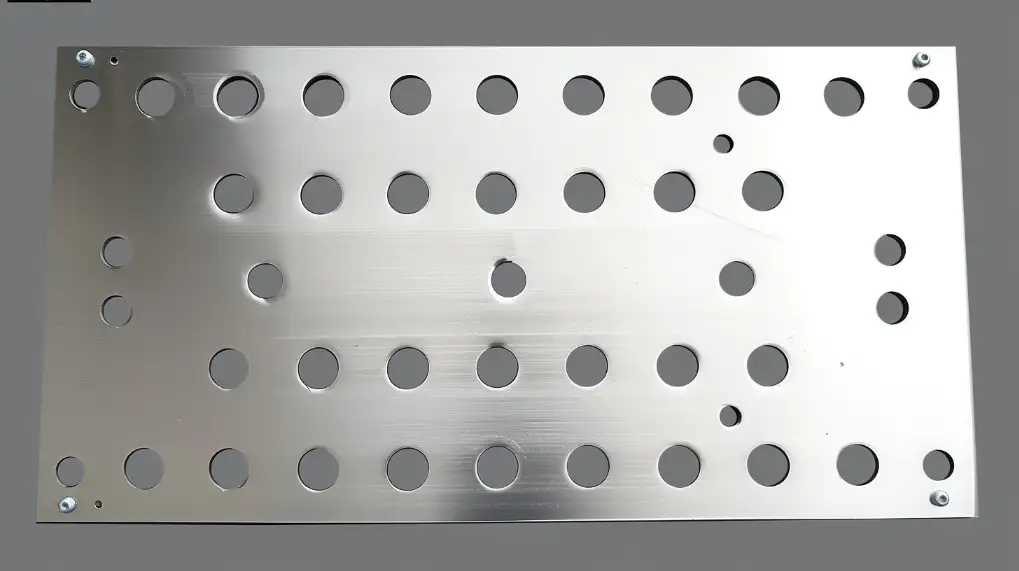
Laser Cutting Machine Costs
Investing in laser cutting equipment involves more than just the initial purchase. Understanding the ongoing costs of operating and maintaining these machines helps you better evaluate the true cost of ownership.
Initial Investment in Laser Cutting Equipment
The initial cost of laser cutting machines can be high, depending on the type and power of the machine. Fiber lasers, for example, tend to be more expensive than CO2 lasers. Prices vary widely, but a high-quality, industrial-grade laser cutting machine may cost anywhere from tens to hundreds of thousands of dollars.
Maintenance and Operational Costs of Laser Machines
After purchasing the laser cutter, maintenance, and operating costs will add to the overall expense. Operational costs include the energy consumed by the laser and any consumables such as cutting gases or cooling fluids. In high-volume environments, replacing these consumables can add up quickly.
Depreciation and Upkeep Costs Over Time
Like any machine, a laser cutter loses value over time. This is called depreciation, and the rate depends on how often the machine is used and how well it is maintained.
Upkeep costs also rise as the machine ages. Replacing parts and dealing with wear and tear will become necessary.
Labor and Operational Costs
In addition to material and machine costs, labor and operational expenses play a key role in determining the overall cost of a laser cutting project. Here’s a closer look at the key factors:
Labor Costs
Labor costs include the time spent by operators, engineers, and technicians. Skilled workers must set up and run the laser cutting machines, especially for more complex jobs. This includes loading and unloading materials, adjusting machine settings, and ensuring the cuts are accurate.
Setup Time
Setting up a laser cutting job takes time. It involves preparing the materials, loading the design files, and configuring the machine. This setup time is usually longer for custom or one-off cuts. This is because the machine needs to be calibrated correctly, and the design must be adjusted for the specific material used.
Laser Cutting Cost Estimation and Pricing Models
Understanding how laser cutting costs are estimated can help you make better decisions when planning your projects. Here’s a breakdown of the most common pricing models used in the laser cutting industry:
Per Hour
One common pricing model for laser cutting services is based on a per-hour rate. In this model, you pay for the time the machine is operating. The rate depends on factors like the machine’s power, the complexity of the cut, and the material being used.
For example, a high-powered machine cutting through thick materials will cost more per hour than a lower-powered machine cutting thin materials. Also, setup times and adjustments during the process affect the overall time and cost. This model is often used when the scope of work is flexible and the time required can vary.
Per Part Pricing
The cost is based on the number of parts being cut in the per-part pricing model. This method is common for large-scale production jobs where many identical parts are made.
The cost per part usually goes down as the quantity increases. This is because the setup time is shared, and material wastage is reduced. However, material type, thickness, and cutting complexity still affect the unit cost. For large-volume orders, this model is often the most cost-effective.
How to Estimate Laser Cutting Costs for Your Project?
To estimate the cost of laser cutting for your project, you need to consider several factors:
- Material Type and Thickness: The material impacts the per-hour rate and the per-part cost. Thicker and tougher materials need more energy to cut, which raises the cost.
- Cutting Time: The complexity of your design affects how long it takes to cut. Simple shapes cost less, while intricate designs with fine details take longer and cost more.
- Machine Type and Power: More advanced machines with higher power cut faster and more accurately but cost more. Investing in a more powerful machine for precision jobs can save money over time by improving speed and efficiency.
- Quantity: For large orders, the per-part cost is usually lower. Bulk orders reduce the setup time per unit, lowering the overall price.
- Labor and Setup Costs: Labor costs for operators and setup time need to be factored in. The machine setup time may increase the cost if you need a custom design.
- Energy Consumption: Higher-powered lasers and thicker materials use more energy, affecting both the per-hour and per-part cost.
Factors to Consider When Requesting Quotes
When asking for quotes, keep these factors in mind to get an accurate and fair price:
- Clear Specifications: Provide detailed specifications, including material type, thickness, dimensions, and the number of parts needed. The more precise your requirements, the more accurate the quote will be.
- Design Complexity: Include your design files (like DXF or CAD files) so the complexity of the design is understood. Intricate designs with tight tolerances will take more time and precision, which affects the cost.
- Lead Time: Let the supplier know your deadline. If you need a fast turnaround, it may increase the cost, especially if the manufacturer needs to speed up the process.
- Volume Discounts: For large orders, ask about volume discounts. The more parts you order, the better the price per unit might be.
- Material Handling: Ask about costs for handling materials and any waste. Some providers may charge extra for offcuts or additional material needed for your project.
- Post-Processing Requirements: If your project needs additional finishing like cleaning, deburring, or coating, include these in your request for a complete cost estimate.
How to Reduce Laser Cutting Costs?
Reducing laser cutting costs is possible with the right strategies. Here are several effective ways to reduce the costs associated with laser cutting:
Optimizing Design for Cost Efficiency
One of the best ways to reduce laser cutting costs is by optimizing the design of your parts. A well-designed part not only works better but also lowers production costs.
Tips for Simplifying Complex Designs
Simplifying complex designs can cut costs. Intricate designs with many fine details take longer to cut, which increases labor and machine time. Avoid unnecessary information or use simpler shapes that still meet your needs. Avoid complex shapes, sharp angles, and tight tolerances, as they require more precise and time-consuming cuts.
Nesting Parts to Save Material
Nesting is a technique for arranging parts on a sheet of material to reduce waste. By nesting parts efficiently, you can use less material, which lowers the cost. Effective nesting requires careful planning and specialized software to optimize part placement.
Choosing the Right Material
Material selection plays a big role in laser cutting costs. It affects both cutting time and the price based on material cost and cutting complexity.
Cost-Effective Alternatives
Instead of using expensive materials, consider cheaper alternatives. Switching from stainless steel to aluminum or using thinner materials can reduce material costs and cut time.
Balancing Quality and Budget
While using cheaper materials can help reduce costs, balancing this with your project’s quality requirements is important. Be sure to evaluate the material’s strength, durability, and suitability for your design before choosing a less expensive option.
Bulk Ordering and Vendor Negotiation
For businesses with large or ongoing projects, ordering in bulk and negotiating with suppliers can lead to significant savings.
Benefits of Larger Orders
Ordering in bulk helps lower the cost per unit. When you order a large quantity, the setup cost is spread over more parts, reducing the price per piece. Many suppliers also offer discounts for bulk orders, making it more economical to buy larger quantities.
How to Negotiate Better Rates?
Start by discussing long-term contracts or bulk discounts. Building a strong relationship with your supplier can help you get better pricing, especially if you commit to regular orders. Be sure to compare quotes from different suppliers to find the best deal.
Cost Comparison with Other Cutting Methods
There are several cutting techniques, and comparing them with laser cutting can be informative. Here is a quick comparison of the different cutting methods:
| Features | Laser Cutting | Plasma Cutting | Waterjet Cutting |
|---|---|---|---|
| Cutting Speed | Very Fast | Very Fast | Moderate |
| Precision Level | Extremely High | High | Extremely High |
| Material Compatibility | Metals, Wood, Plastics | Primarily Metals | Metals, Glass, Stone |
| Initial Equipment Cost | High | Moderate | High |
| Operational Costs | Moderate to High | Moderate | Moderate to High |
| Waste Production | Minimal | Moderate | Minimal |
| Maintenance Requirements | Frequent | Occasional | Regular |
Conclusion
Laser cutting offers precise, high-quality results, but costs can vary. To keep your project within budget, it’s important to understand the factors influencing the price, such as material choice, design complexity, and machine type. By planning carefully and communicating with your supplier, you can control costs and achieve the desired results.
Need help estimating the cost of your laser cutting project? Contact us today to discuss your requirements and get an accurate quote.
FAQs
What is the average cost per hour for laser cutting?
The cost per hour for laser cutting varies depending on factors like the type of laser, the material used, and the job’s complexity. On average, hourly rates range from $75 to $150.
How much does laser cutting cost per part?
The cost per part for laser cutting depends on material, thickness, and design complexity. On average, simple cuts may cost between $0.5 and $10 per part, but more detailed or thicker parts can cost significantly more.
How can I get the best deal on laser cutting services?
To get the best deal on laser cutting, focus on simplifying your design to reduce complexity, choose cost-effective materials, and order in bulk when possible. Negotiating with vendors for discounts, especially on large orders or long-term projects, can also help save money.
What are the hidden costs of laser cutting?
Hidden costs in laser cutting can include setup fees, machine downtime, and material wastage. Custom designs often require additional setup time, increasing the overall cost. Material wastage, especially when parts are not nested efficiently, can drive up costs.
More Resources:
Types of Laser Cutters – Source: Accurl
Material Selection for Laser Cutting – Source: Fractory
Hey, I'm Kevin Lee

For the past 10 years, I’ve been immersed in various forms of sheet metal fabrication, sharing cool insights here from my experiences across diverse workshops.
Get in touch

Kevin Lee
I have over ten years of professional experience in sheet metal fabrication, specializing in laser cutting, bending, welding, and surface treatment techniques. As the Technical Director at Shengen, I am committed to solving complex manufacturing challenges and driving innovation and quality in each project.

